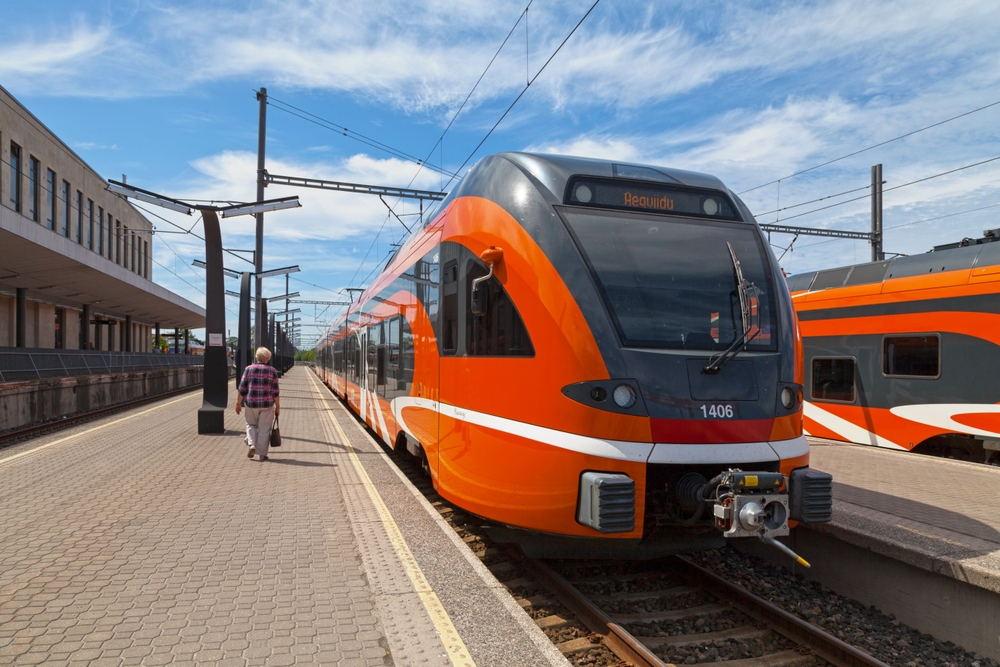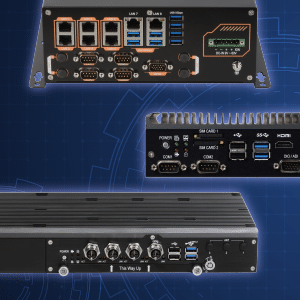An Overview of Railway Traffic Systems

The railway traffic system is a cornerstone of modern transportation, enabling the efficient and safe movement of people and goods across vast distances. This complex system is not merely about the operation of trains. Still, it involves multiple levels of planning, coordination, and control to ensure that rail networks operate smoothly and meet their demands.
This article provides an overview of railway traffic systems, focusing on the strategic, tactical, and operational levels of operation and the significance of automated control systems in enhancing the efficiency and safety of railway operations.
Strategic Level of Railway Traffic System

At the strategic level, long-term planning decisions shape the structure and capacity of the rail network. This involves forecasting transport demand, designing the network, and setting rules and procedures that govern railway operations.
Transport demand forecasting is crucial for anticipating the future needs of passenger and freight services. Accurate forecasting allows for the development of a rail network that supports future growth and optimizes resource utilization. Well-designed railway networks can reduce logistics costs by up to 30%. The network’s design, including track layouts, station placements, and maintenance facilities, is critical in ensuring the system’s overall efficiency and reliability.
The rules and procedures established at this level ensure that the railway network operates within a framework prioritizing safety and efficiency. These include regulations on train speeds, signaling protocols, and maintenance schedules, all aimed at minimizing accidents and disruptions while maximizing network capacity.
Tactical Level of Railway Traffic System
The tactical level of railway traffic systems involves the detailed planning required to translate strategic objectives into operational reality. A vital aspect of this level is the design of timetables, which coordinate the movement of trains across the network.
Timetable design is a complex task that requires balancing efficiency and flexibility. An efficient timetable maximizes available track capacity, reduces delays, and ensures trains run on time. However, it must also be flexible enough to accommodate unforeseen events such as equipment failures or extreme weather conditions.
The challenges of timetable design are compounded by the need to coordinate the movements of multiple trains, each with its speed, stopping patterns, and priorities. Even minor disruptions can cascade in a busy rail network, leading to significant delays. Therefore, effective timetable design involves planning the movements of individual trains, anticipating potential disruptions, and developing strategies to minimize their impact.
Operational Level of Railway Traffic System
At the operational level, the focus shifts to the real-time management of train movements and handling disruptions. This level involves traffic management, disruption management, and the operation of signaling systems, which are crucial in ensuring trains’ safe and efficient movement.
Traffic management involves the real-time monitoring and controlling of train movements to ensure that trains run on schedule and that disruptions are managed effectively. This includes tasks such as adjusting train speeds, rerouting trains around blockages, and coordinating the movements of multiple trains to avoid conflicts.
Disruption management is another critical aspect of the operational level. Despite the best efforts of planners and operators, disruptions such as equipment failures, accidents, or extreme weather conditions are inevitable. Effective disruption management involves quickly identifying the cause of the interruption, implementing strategies to minimize its impact, and communicating with passengers and staff to keep them informed.
Signaling systems are essential to railway traffic management. They provide real-time information to ensure trains operate safely and efficiently. Modern signaling systems use a combination of trackside signals and in-cab displays to provide train operators with the information they need to manage their trains safely.
Automatic Train Control (ATC) System
The Automatic Train Control (ATC) system is a sophisticated technology that enhances the safety and efficiency of railway operations by automating many of the tasks involved in train operation. The ATC system comprises three integrated subsystems: Automatic Train Supervision (ATS), Automatic Train Operation (ATO), and Automatic Train Protection (ATP).
Automatic Train Supervision (ATS)
ATS is responsible for overseeing the overall operation of the railway network. It monitors train movements, ensures adherence to the timetable, and manages disruptions. ATS provides operators with real-time information, allowing them to make informed decisions about managing the network.
Automatic Train Operation (ATO)
ATO automates train driving, controlling tasks such as acceleration, braking, and stopping. It improves the precision of train movements, leading to more consistent and reliable service. ATO also enhances safety by reducing the risk of human error.
Automatic Train Protection (ATP)
ATP is a safety system that prevents trains from exceeding speed limits and ensures they stop at signals when required. ATP continuously monitors the train’s speed and applies the brakes automatically if necessary to prevent accidents.
Together, these subsystems ensure that trains operate safely and efficiently, with minimal human intervention.
Smart Railway Automation System
Smart railway automation systems represent the next generation of railway traffic management. They use advanced computerized technology to remotely control and manage railway operations. These systems are designed to optimize the performance of the railway network, improving efficiency, safety, and reliability.
The main components of an intelligent railway automation system include track circuits, sensors, switches, and signals. Track circuits detect the presence of trains on the track, providing real-time information about train positions. Sensors monitor various aspects of the railway infrastructure, such as track conditions and environmental factors, allowing for predictive maintenance and early detection of potential issues. Switches control the routing of trains, while signals provide instructions to train operators.
Innovative railway automation systems are used on high-speed passenger and freight railways, offering increased capacity, improved punctuality, and reduced operating costs.
Critical Benefits of Automatic Train Operation
Implementing Automatic Train Operation (ATO) offers several significant benefits, including improved capacity, punctuality, and reliability. ATO enhances energy efficiency by optimizing train movements and reducing unnecessary acceleration and braking. It also improves safety by reducing the risk of human error and providing more consistent train operation.
In addition to these operational benefits, ATO supports service recovery by enabling trains to resume normal operations more quickly after disruptions. It also facilitates maintenance prediction, allowing for proactive maintenance that reduces the likelihood of equipment failures.
Finally, ATO improves the efficiency of track-to-train transmission, ensuring that information is communicated quickly and accurately between trains and the control center. This reduces the risk of delays and improves the overall reliability of the railway network.
Automatic Train Control in Action
Automatic Train Control (ATC) systems have been successfully implemented in railway networks worldwide, demonstrating their effectiveness in improving safety, efficiency, and reliability. These systems have proven particularly valuable in high-density urban environments, where they help maximize the rail network’s capacity while minimizing the risk of accidents and disruptions.
As the demand for rail transport continues to grow, the importance of efficient and reliable railway traffic systems will only increase. To meet this demand, it is essential to continue investing in advanced technologies such as ATC and intelligent railway automation systems.
Explore how SINTRONES’ Railway In-Vehicle Solutions can enhance your operations and drive innovation in your rail network.




